La storia dei 10.000 cammelli condannati a morte in Australia perché «bevono troppa acqua»
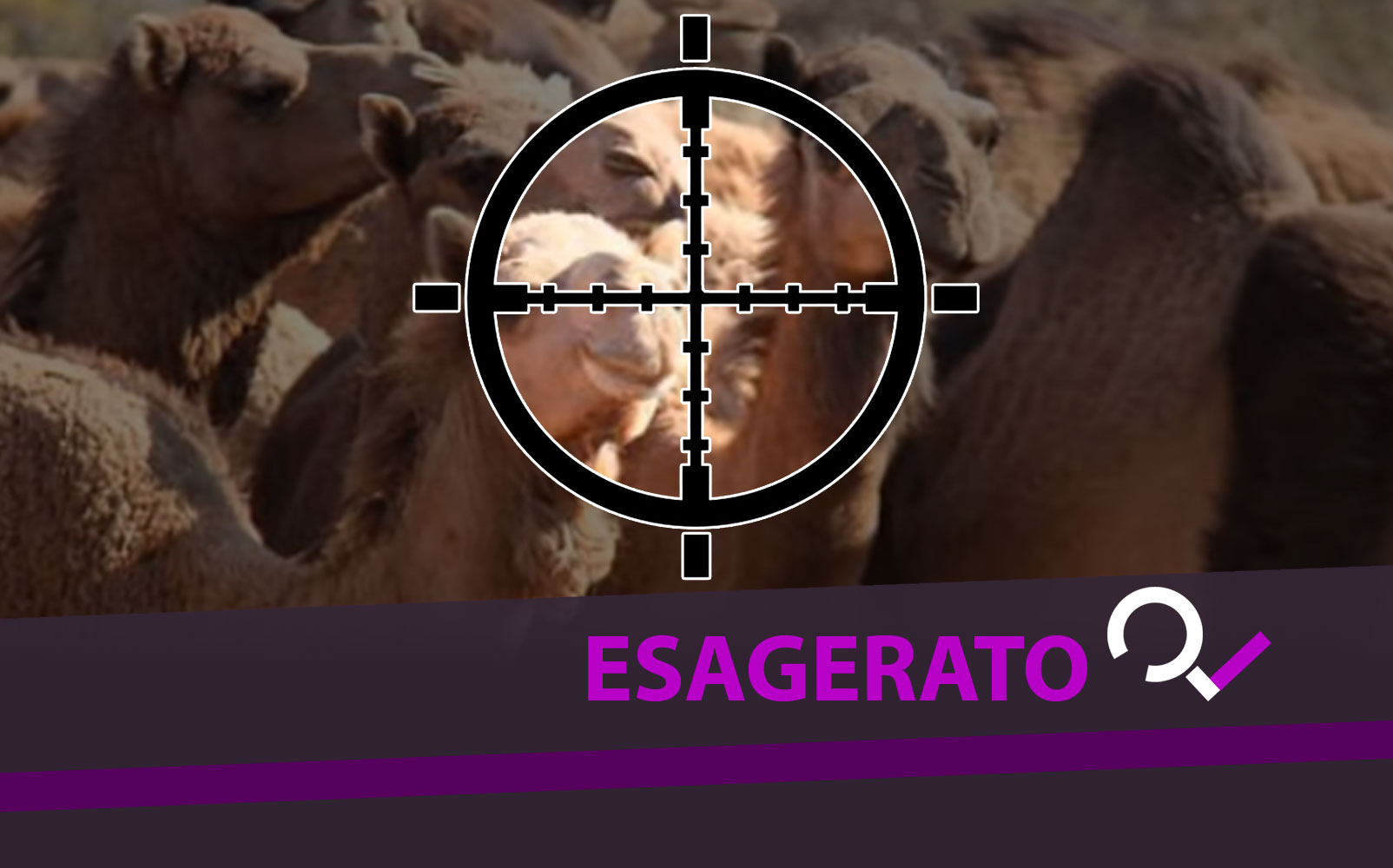

Tra le richieste di verifica abbiamo quella relativa all’articolo de La Stampa dell’otto gennaio 2020 dal titolo «Australia, 10.000 cammelli verranno uccisi dai cecchini in elicottero: “Bevono troppa acqua”». Secondo quanto riportato nel pezzo, l’abbattimento dovrebbe durare cinque giorni e la richiesta arriverebbe dagli abitanti del posto perché gli animali invadono le loro proprietà private in cerca di acqua.
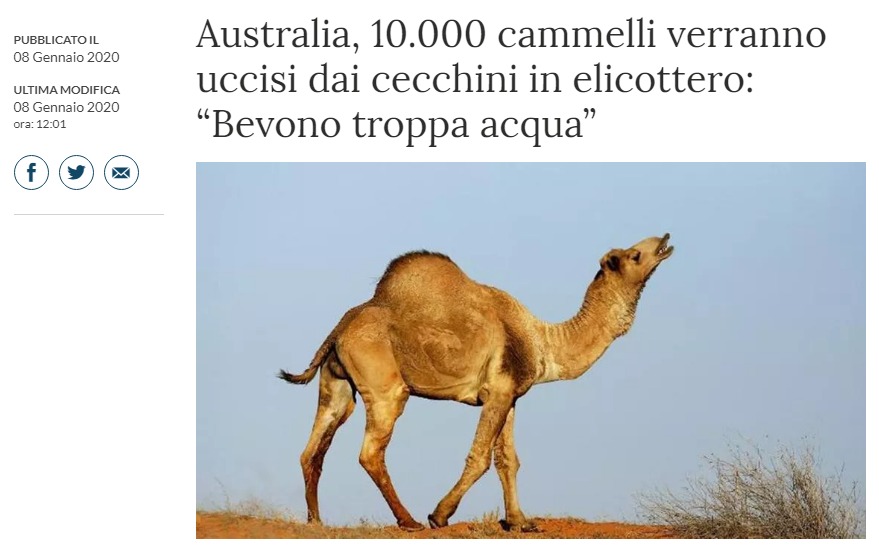
Nel pezzo si riportano le dichiarazioni del governo locale di Anangu Pitjantjatjara Yankunytjatjara (AYP) che riporta casi di cammelli che abbattono le recinzioni , entrano nelle case e cercano l’acqua ovunque. Un disagio che avrebbe portato alla decisione più drastica da parte dei leader aborigeni locali.
Nella pagina Facebook ufficiale del governo locale «APY Lands – Anangu Pitjantjatjara Yankunytjatjara» troviamo il comunicato stampa pubblicato in un post del 6 gennaio 2010:
There will be a Feral Animal Kill across the APY Lands SA
Feral Animals but specifically Camels are the primary target.
– APY have listened to Anangu and have also seen extremely large groups of camels and other Feral animals in and around communities and in speific hot spots in the APY Lands;
– These groups are putting pressure on the remote Aboriginal communities in the APY Lands and the pastoral operations as the camels search for water;
Coupled with Dry conditions, Animal welfareissues, Threats to communities, Scarce water, Health & Environmental impacts; destroying the country and eating all Anangu food supplies; endangering travellers on the Stuart Highway and on the Lands;
The APY Executive Board of Management held an Urgent Board meeting On 11 December 2019, to discuss the control of the Camel & Feral Animals that were impacting communities and pastoral operations;
At this meeting the APY Executive approved a resolution to do an Aerial Cull of camels and other Feral animals across the APY Lands Communities;
The locations of the large congregations of Feral animals have been identified by APY, which affect all main communities;
With the current ongoing dry conditions the large camel congregations threatening the APY communities and infrastructure immediate camel control is needed;
APY Executive representatives are liaising and consulting with communities on the Cull leading up to when it occurs. So they can inform and discuss with TO’s and community members.
Daily briefings are occuring with APY Management and Partners, a Roster of staff to manage the day to day leading up to the cull is in place.
The Cull (kill), will occur the week of 8th Jenuary, 2020 when the aerial operations will commence, (expected to go over 5 days).
This is a partnership with APY, AWNRM and the 10 Deserts project.
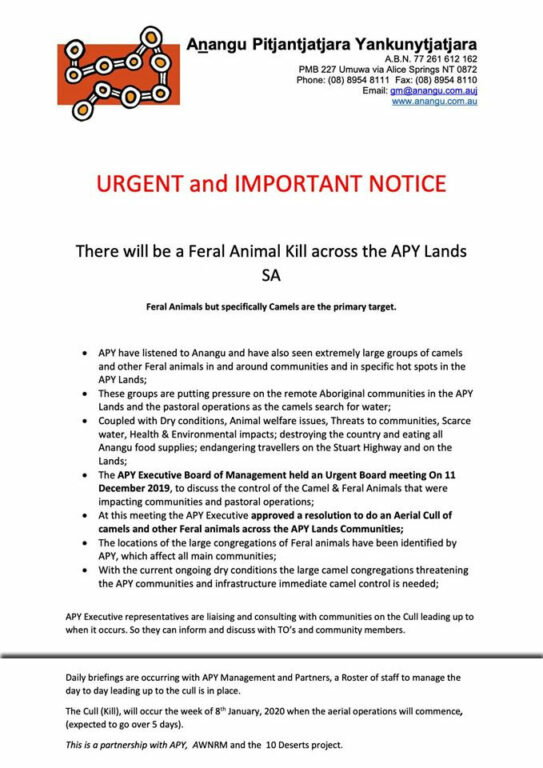
La decisione era stata presa in una riunione del consiglio di amministrazione della regione tenutasi l’undici dicembre 2019. Non riguarda solo i cammelli, ma tutti gli animali selvatici presenti nella zona che potrebbero danneggiare le proprietà dei locali. Nel comunicato non viene riportato il numero di esemplari da abbattere, ma soltanto la data di inizio e il numero di giorni in cui sarà possibile abbattere gli esemplari.
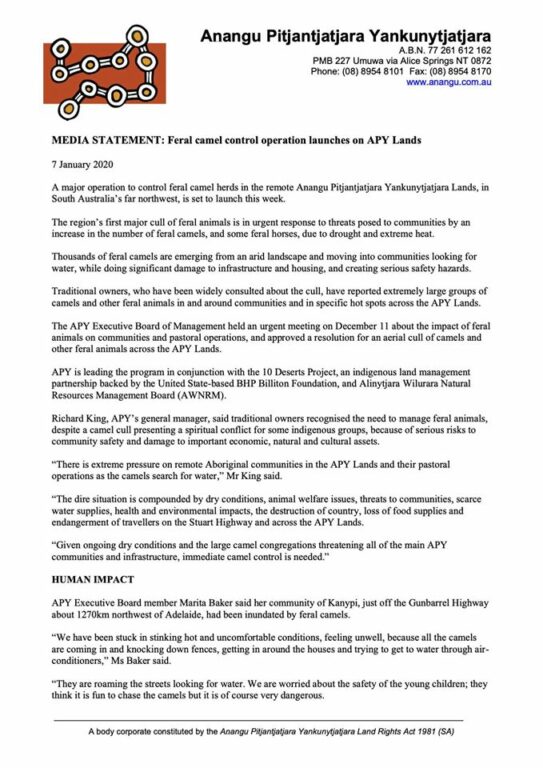
In un ulteriore comunicato del 7 gennaio 2020 leggiamo «Thousands of feral camels» dove «migliaia» è un numero imprecisato. Da dove potrebbe venire la cifra dei 10 mila? Si tratta di una stima dei cammelli in cerca d’acqua fornita dal Dipartimento per l’ambiente del Sud Australia (DEW) mentre, secondo quanto riportato dal media australiano ABC, dovrebbero essere abbattuti dai 4.000 ai 5.000 cammelli.
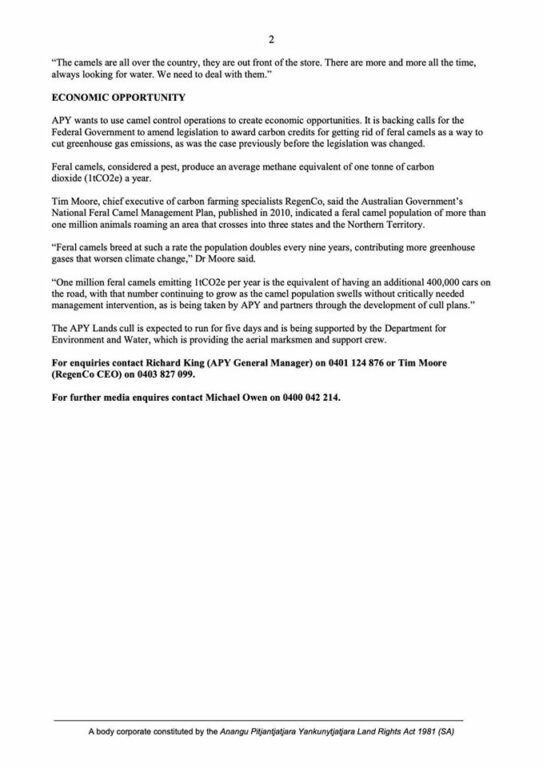
Non è la prima volta
Come riporta un articolo di ABC del 2014, tra il 2009 e il 2013 sono stati uccisi un totale di 160.000 cammelli in tutto il Paese. Già nel 2009, infatti, le autorità australiane avevano deciso di procedere con l’abbattimento di migliaia di esemplari:
The government plans to use helicopters to herd the camels about nine miles outside of town next week, where they will be shot and their carcasses left to decay in the desert. The state government will give a 49,000 Australian dollar ($45,000) grant for the cull and to repair damaged infrastructure in the town.
Nel 2009 il governo australiano aveva stanziato – secondo quanto riportato dall’articolo di ABC del 2009 – 19 milioni di dollari australiani per un programma di abbattimento visti i rischi che corrono i cittadini di fronte a un animale introdotto nel 1840 nel continente. Ad occuparsi del loro controllo è la Ninti One.
Conclusioni
Perché il tag «esagerato» per questa vicenda? L’intervento estremo è reale, ma ci sono delle cose da chiarire. Innanzitutto il problema non riguarda il «bere troppa acqua», ma le devastazioni e i danni provocati ai cittadini locali. Il numero di 10.000 esemplari non è presente nei comunicati, mentre il Dipartimento per l’ambiente del Sud Australia (DEW) parla di un numero che va dai 4.000 ai 5.000 esemplari in quella regione.
